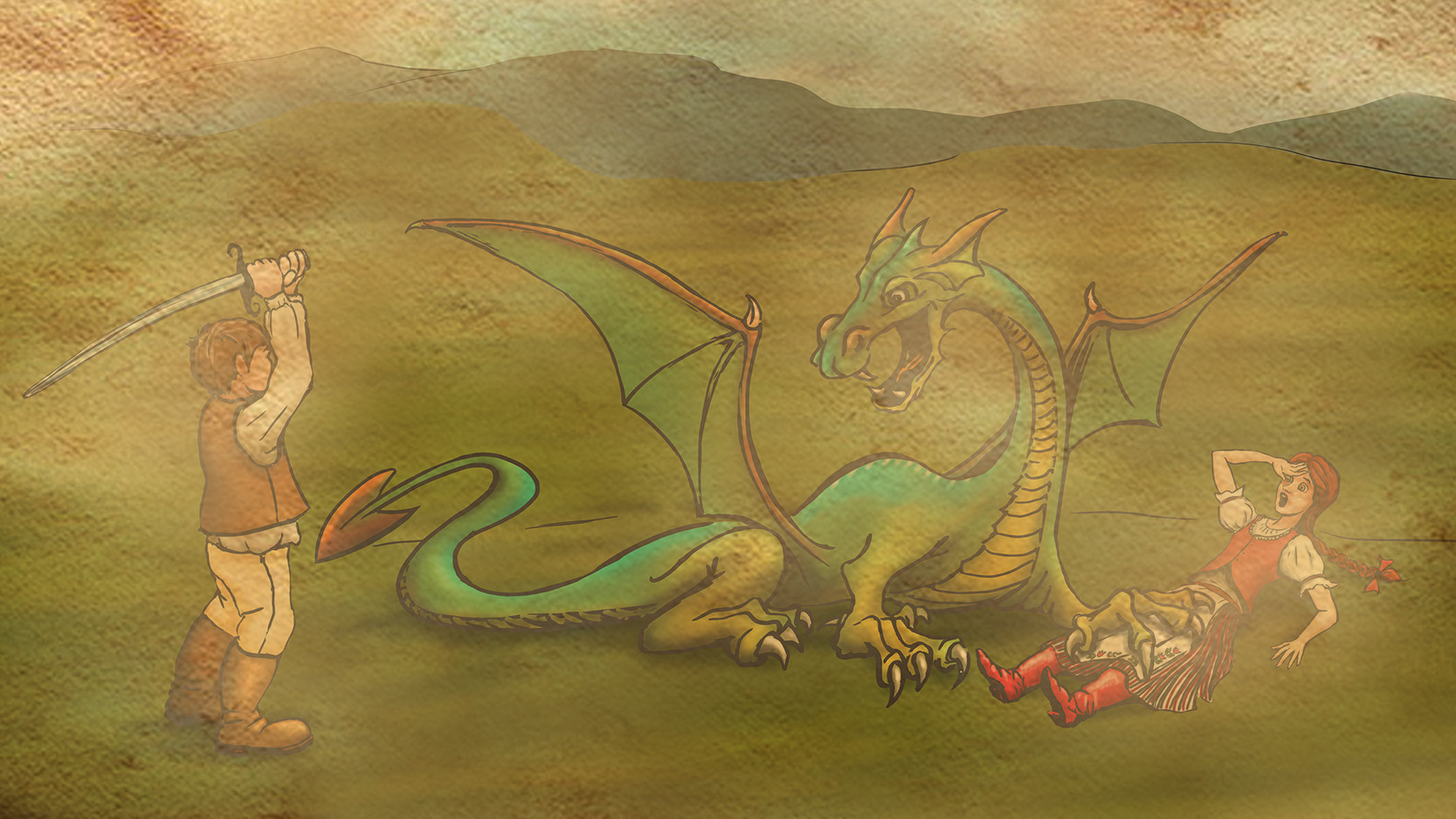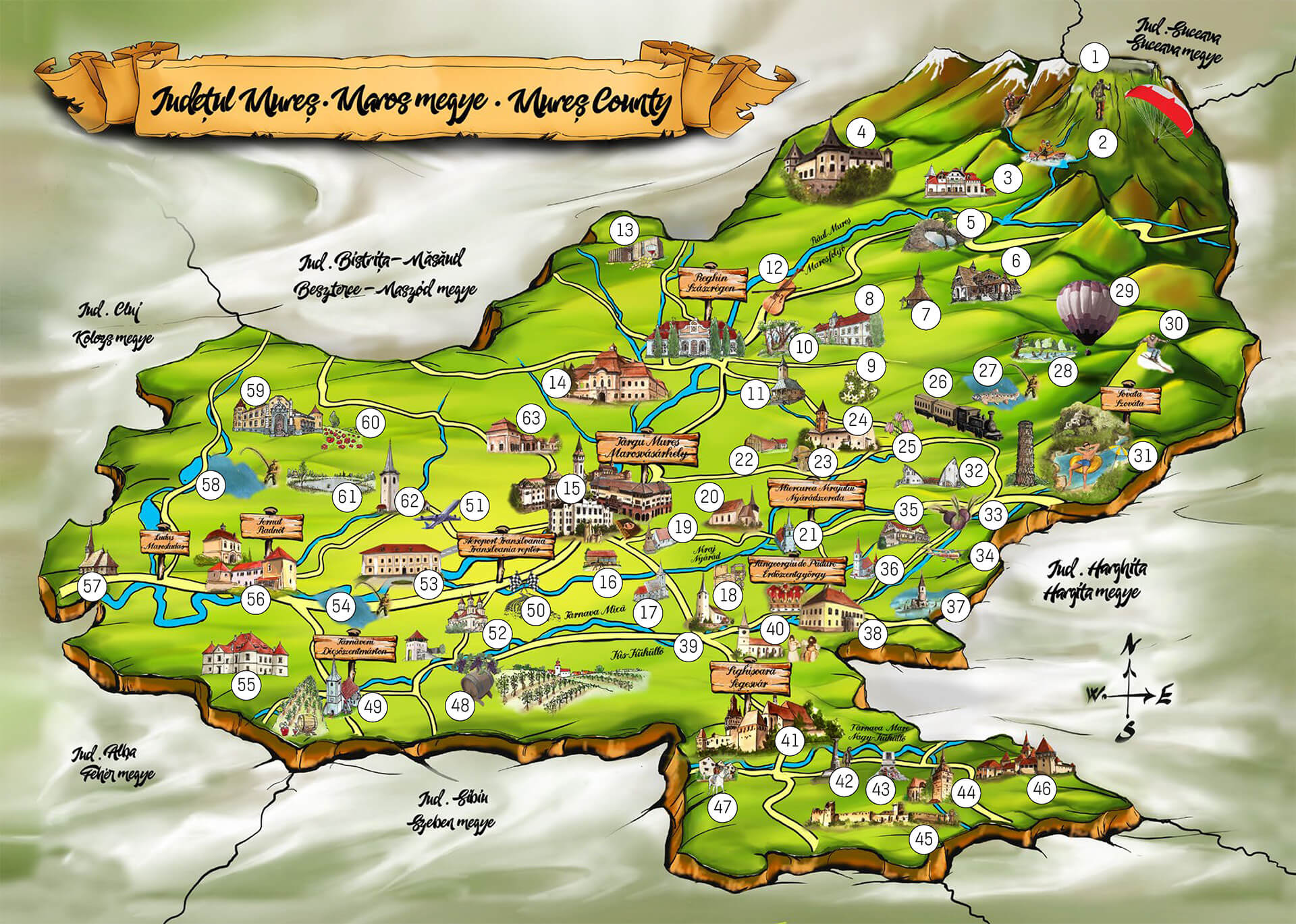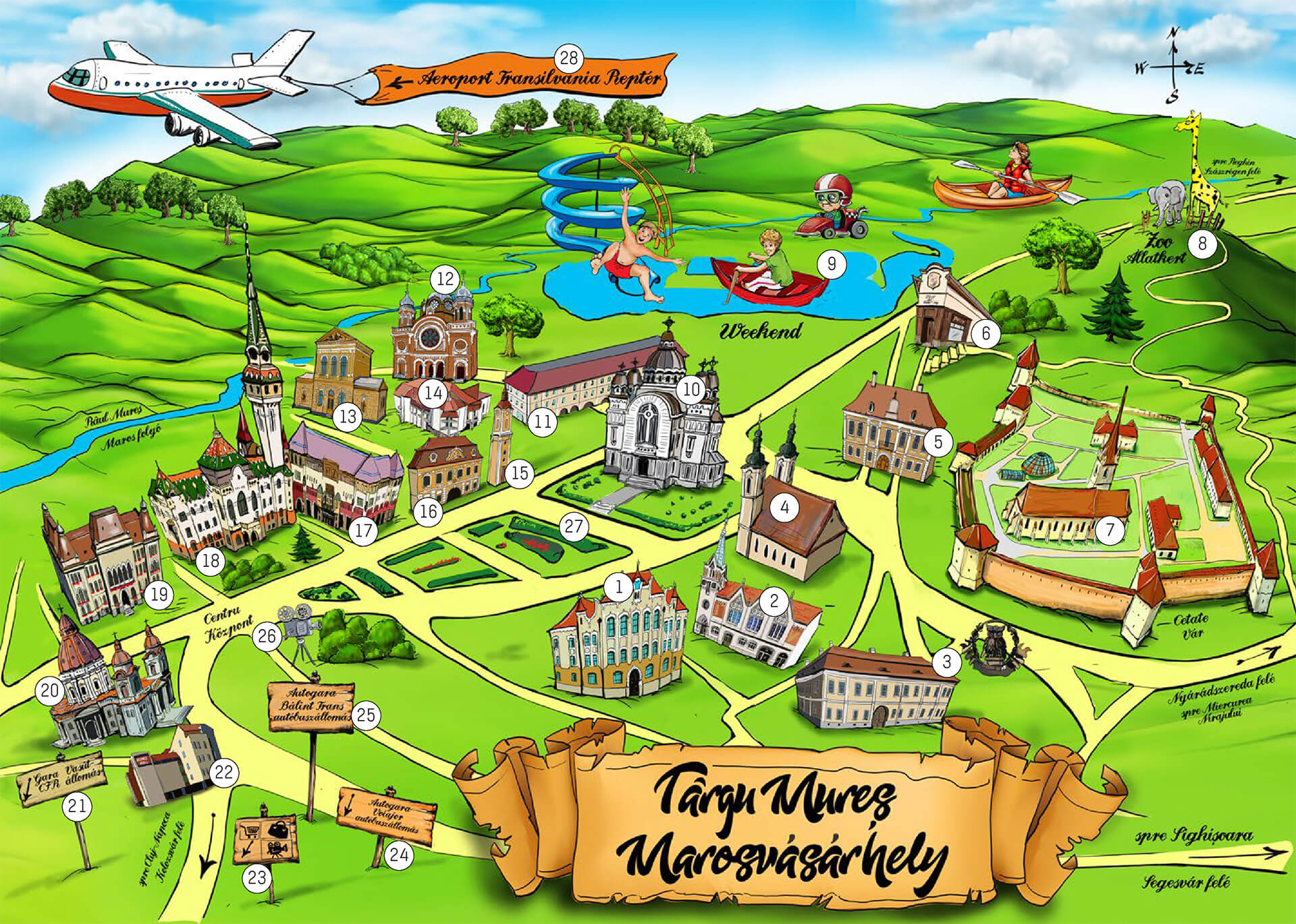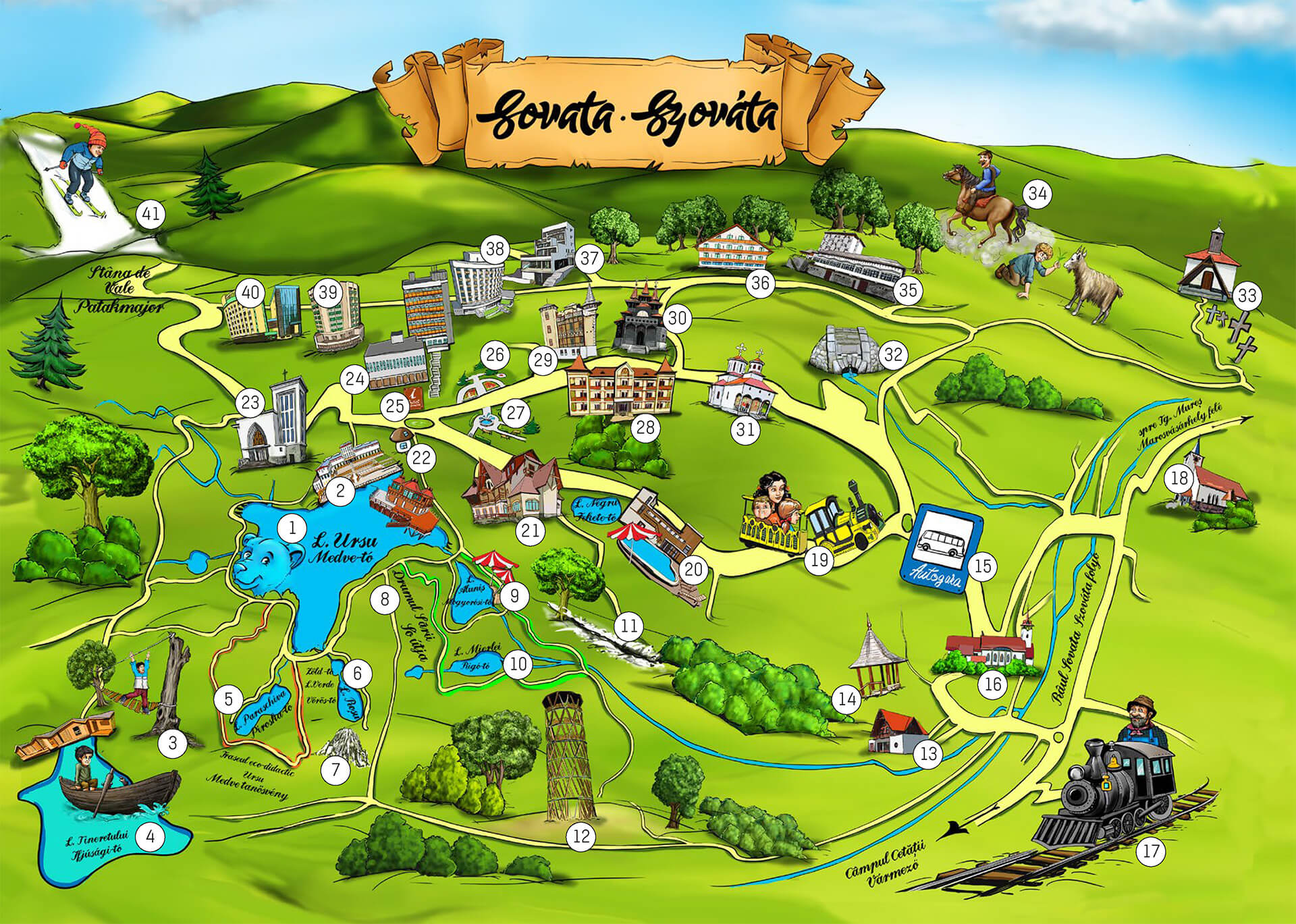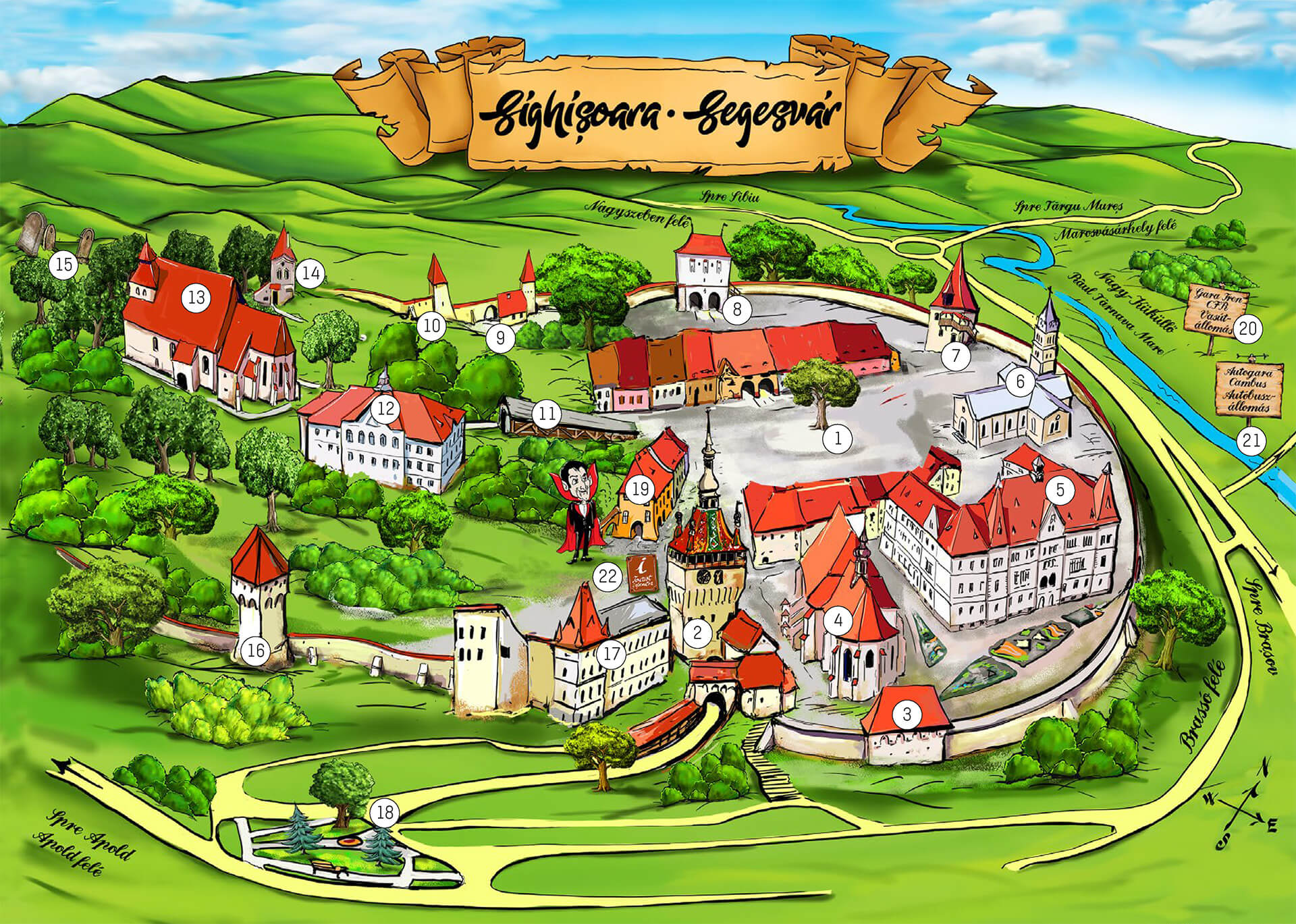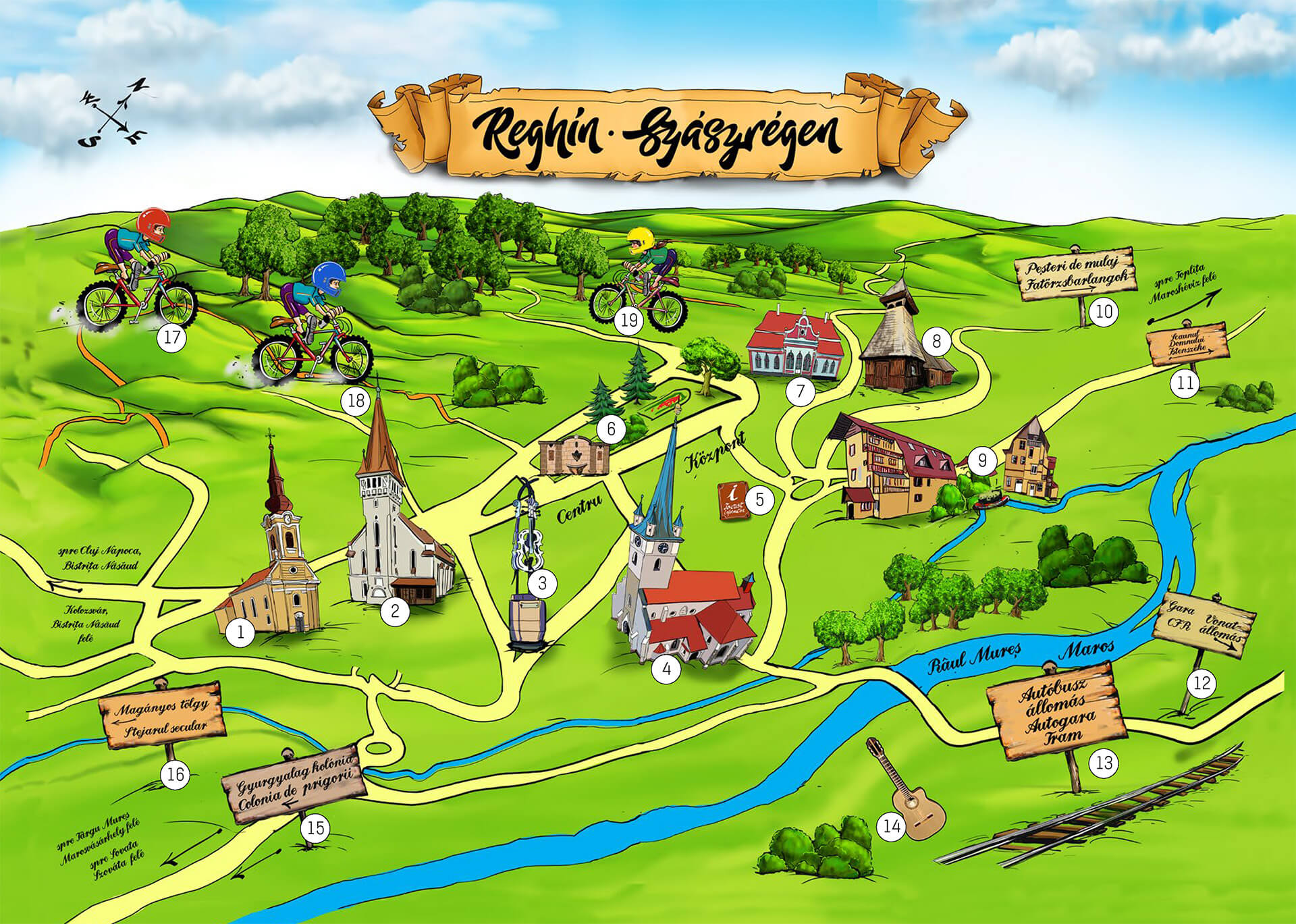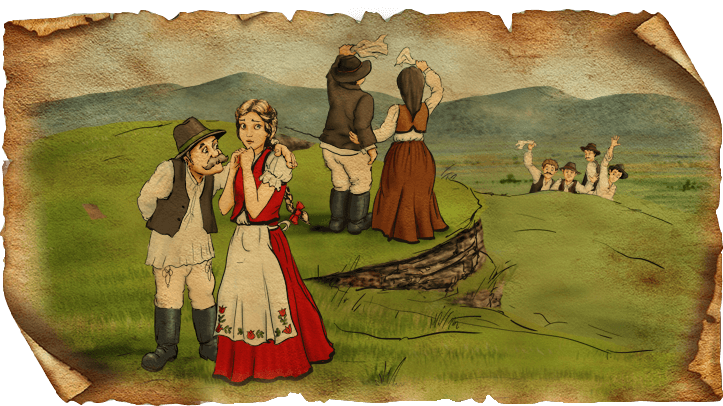
Farewell Bench - Cristești
Southwards of Maroskeresztúr, a mountain rises between the Maros / Mures and the Nyárád / Niraj River, one of which is called Farewell Bench. According to some opinions, it got the name from the fact that he had long been a pilgrimage place even before the Reformation. Another tradition, however, says that the place has a sadder history: at this place the Szekler men going to battle said good-bye to their beloved, dear ones, whom they left at home. Balázs Orbán writes that the farewell was a touching, solemn moment: the parents blessed the weapons of the warriors while they were told, "Fight with it to get honour for your homeland and for me." Families escorted them to this place, and many soldiers were seen here at the Farewell Bench for the last time.The inhabitants of Maroskeresztúr lived over centuries many devastations and turbulent times. In 1600, Giorgio Basta general's soldiers killed not only the fleeing inhabitants, but also set fire to their temple-fortress. Later, Polish and Tartar troops broke into Transylvania and they devastated the village – for a long time Pusztakeresztúr (puszta = desert) was its name.In this settlement was born one of the greatest figures of 19th century Transylvanian Hungarian medicine, Vilmos Knöpfler, who was also a member of the Hungarian Parliament. His name is attached to the foundation of the hospital in Marosvásárhely / Târgu-Mureş. He built the Castle of Maroskeresztúr / Cristesti, which burned down later.Cristesti has nowadays been completely built together with the nearby Marosvásárhely, its main attractions are the rebuilt churches during the centuries.Visitors to Cristesti today can visit the still-recognizable Farewell Bench, which is not the place of resignation, but the sign of the hope of the seeing again: the lovers of Szekler warriors who had gone to war always believed in the return of soldiers. It is not a coincidence that they said good-bye to them so: "Come back so I can be proud of you!" The Farewell Bench reminds people today of the Szeklers’ courage, determination and Spartan simplicity. If we climb up this hill, think of the former Szekler mothers, fathers and fiancées, who looked at the horizon with hope over many years, waiting for the return of their loved ones.
Learn more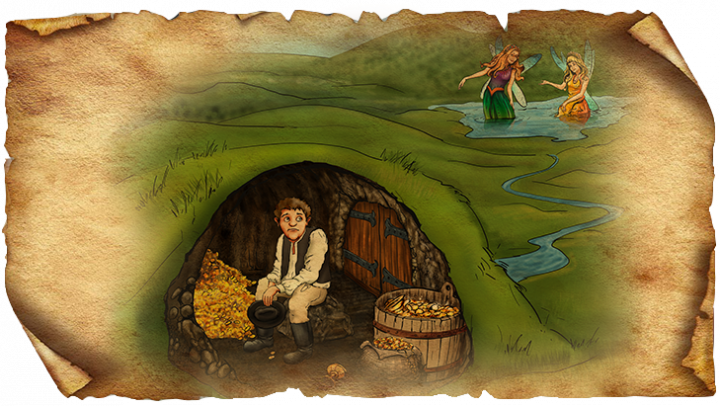
The treasure guardian fairies of the Pagan Fortress - Band
The hill named Pagan Fortress rises between Mezőbánd and Mezősámsond, and although it is used today as a farmland, it is believed that from time immemorial, fabulous treasure is hidden in a secret cellar. Once there was a castle at this place: castle of Sámsond / Șincai, where the name of the small town comes from. The folk tradition says that the inhabitants of the castle, according to ancient religion, presented sacrifice here to their Warlord long time ago. The treasures of the castle were hidden at a safe place in a secret cellar under the fortress. But the old people also knew that they were guarded by two fairies, and no one dared to search for them, as they could only be lucky when the fairies left the cave for a short time to bathe in the nearby Bándi Lake. Lots of lucky hunters already tried to get the treasures. A shepherd grazed his flock just near the entrance to the cellar, when the fairies left the treasure unattended, and managed to get into the cavity sealed by the iron door. The lad filled even twice his shepherd coat with gold and gemstone, but his greed drove him back even for the third time - if he gave up on the idea, maybe his great-grandchildren could have lived in a genteel way. The fairies returned to the cellar, and then the door slammed behind them. The shepherd lived in captivity for seven years, without food or water, until the door opened again. As he suddenly got out of the darkness, he lost his sight in the enormous light. He lived his life as a beggar, this is how he was punished for his greed. This, however, did not discourage later treasure hunters from the hillside research - fortunately, they found here artefacts from Avar-age, but archaeological materials from the Bronze and Roman times were also discovered. Several small villages were merged into the settlement in the 16-17th centuries, among them Székelygerebenes, Adósfalva, Súgófalva, Kistelek, Egerháza, Csükmöd and Rózsásfalva, the remains of a Roman colony were discovered here, and coins were also found under the earth, if these were not even the treasures of the fairies. Mezőbánd / Band is an important transport hub, as the parish center is crossed by the county roads which lead through Radnót/ Iernut and Nagysármás / Sărmașu to Kolozsvár / Cluj-Napoca. Károly Agyagási, a doctor, poet, translator, Tibor Siklódy Hungarian landscape painter and Eszter Mátéfi handball player were born here. In the boundaries of the settlement, besides the medieval castle mentioned above, there were also old mansion houses, but these are no longer visible, as most of the village burned down in 1857. If you are traveling as a tourist to Mezőbánd and its surroundings, at the supposed place remember the unlucky shepherd's case and the lesson of his story: a mouthful of bread is worth more than a bag of gold. If we get hungry on the way, fortunately, we could ask for a mouthful of bread from our dear hosts in Mezőbánd / Band.
Learn more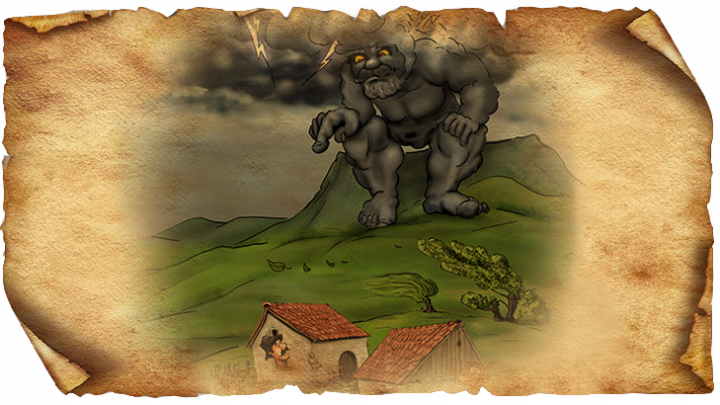
God's lake - Transylvanian Plain
The most beautiful and mysterious lake in Mezőség lies between Mezőbánd / Band, Mezőmadaras / Mădăraș and Mezősámsond / Șincai, on a hilltop. An interesting feature of the lake is that it is not fed by a spring or stream and it has no outflow. It is called the Lake of God because, according to its original saying, it was created as a result of the punishment of God. According to folkways, in the old days, evil people lived in this region, constantly arguing with each other. God was sad due to the beastliness of the people, so He tried change their way of life giving them different signals. After a few warnings, a huge storm was finally created in the region - the local people also noticed that this was not a simple storm, as a heavy black mass hit one of the hills and cut off the top as the corners of the bread is usually cut off. This was already understood by the local people, and they never argued again. On the hilltop, as a result of the impact, a strange lake was created. Due to its teardrop shape, it is considered to be the tear of God, which fell because of the sadness of human evil. In fact, according to a scientific theory, meteorites may have crashed into the hillside, and this is how God’s lake was created in the crater. Balázs Orbán writes about it that “in 1852, on 4th September, between 5 and 6 p.m., there was a terrible thunder could be heard from the clear, unclouded sky, followed by several bangs, and the judge from Fekete (Vaszilui Tyifor), who was just fishing on the lake by boat, saw a huge fiery mass falling down to the lake at such a fast speed that its water was spilled up to his lap, and even the surface of the whole lake was running high; at the same time, there were falling several such fiery masses around the lake.” We can certainly interprete it as a meteorite hit based on this description, which is also proved by the fact that the locals managed to collect some sixty stones. The folk tradition further mentions that big waves of the lakewater can be sometimes observed, and according to belief, someone in the region is doing bad things at such moments, thus exasperating God. According to another legend, an old farmer together with his oxen and cart was absorbed by the lake because he was cursing on the shore of the lake as his oxen did not want to drink from the muddy water. If we are eager to see God’s lake, we have to get off the highway at Drekulyatelep / Drăculea Bandului, between Mezőbánd and Gerebenes / Grebenișu de Câmpie, from where a dirt road leads to the hill. Reaching the hill, the sight is spectacular in front of us: the water of the lake is even and its surroundings are impressive. It is not advisable to do or speak wrong near the lake based on the circumstances of its creation, but we can admire the wonderful creations of the Almighty.
Learn more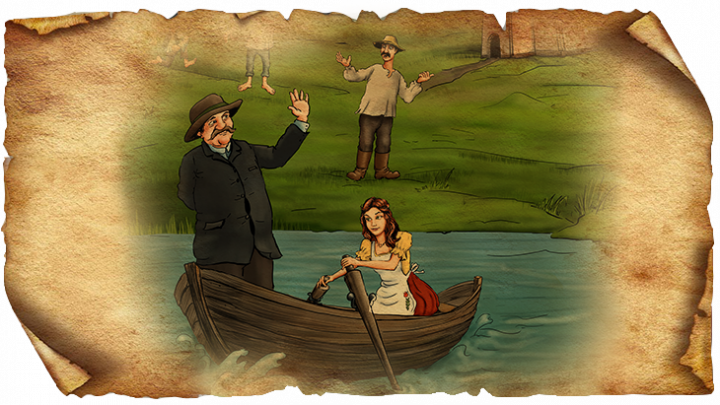
Punishment from God - Culpiu
One of the most beautiful small settlements of Mezőség / Câmpia Transilvaniei lies near Nagyerdő / Great Forest. Balázs Orbán wrote about it: "this village lies in such a beautiful valley surrounded by mountains that will impress everyone, but especially the native people: the village is surrounded by beautiful, green forests worthy of the name Great Forest, as it is undoubtedly the largest and the most beautiful woodland in the region of Mezőség / Câmpia Transilvaniei”. The abyss near the settlement is considered by the people to be the result of a divine blow that hit a shepherd. The shepherd was grazing his sheep in the land of others during a long rain, until the farmers kept their animals in the sheepfold and stables. God saw this, and punished the shepherd: the land fell under the flock, and the shepherd and the sheep became victims of the depth. According to the legend, they are still in the depths of the abyss in Mezőség / Câmpia Transilvaniei. The village lies only 14 kilometers north-west of Târgu-Mureş, in the immediate vicinity of the Korhány Mountain. It is also easily accessible to tourists. It belongs administratively to Mezőcsávás / Ceuașu de Câmpie, which is just ten kilometers away. Forests, fields, picturesque hills and a small lake close to the Komlód Valley make this place even more beautiful. There is a nice view of the surrounding area from the highlands next to the village - on the Borsos Hill was a castle centuries ago, according to tradition, there was a battle at the place called of Vérpad for the possession of the castle. The name of the mountain suggests that Tamás Borsos, the honoured diplomat of Gábor Bethlen prince - who built the castle in Târgu-Mureş - possessed this place. In Kölpény, the Szekler aristocratic Kuun family also had a mansion house, which was demolished in 1912. According to historical data, the nearby Bocsok forest was donated by the Prince Bocskai István himself in 1605 to the eleven Bishop's warriors exceling in the Battle of Edelény; however, the letter is not kept in Kölpény, but in the archives of the chapter in Gyulafehérvár / Alba Iulia. The medieval church of Kölpény still stands today, being one of the sights of the settlement: the small church was built of natural stone, and in 1708 it underwent major transformations, there is a wooden tower next to it. In the Middle Ages, the Catholic population converted completely to Unitarian religion after the Reformation, and then returned to the Reformed religion. The village can be a real home to the lovers of the folk dance: one of the most important parts of the famous folk dance of Mezőség region is the dance group in Kölpény, although it is possible to learn it from less and less people in the village. A famous native of Mezőkölpény is the dancer Teréz Szabó, who was granted the title of Master of Folk Art in August 2013. Besides the borders of the village, it is also worth exploring the surrounding hills: there is a small fish pond between the highlands and we find an inn in the middle of the Lake Kölpény. However, roaming between the steep hills and small valleys, we should be careful, not like the shepherd grazing his sheep on the land of others.
Learn more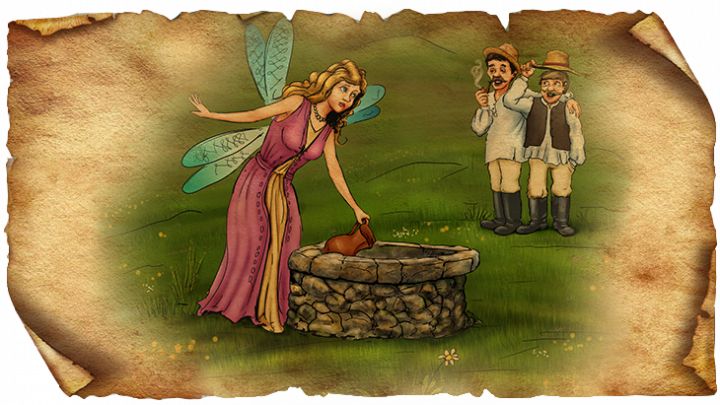
The fairies of the Backa fortress - Herghelia
The settlement Mezőménes is situated in the middle of Transylvania, in Mezőség / Câmpia Transilvaniei, in a picturesque setting, only eleven kilometers from Târgu Mureş. No wonder if fairies ever lived in this beautiful landscape: the legend is transferred from father to son between the locals, according to which they owned the Backa fortress rising at the boundary of the settlement. The fairies lived peacefully in the castle until more and more churches were built in the populated Mezőség. According to the folk myth, they were bothered by the bell, so that they sent legates to Mezőménes, persuading people not to bell and to be pull down the tower. The villagers did not even want to hear about it, and the refusal was considered as war message by the fairies: they destroyed all the churches of Mezőség in revenge. Once the people of the Backa fortress got into trouble: the water of the fairies ran dry and they were forced to ask for help from the people, but they did not even respond to the fairies. The thirst led to the evacuation of the Backa fortress, and its inhabitants left the area. This mythological region is nowadays famous for other attractions, such as the health and lifestyle center in Mezőménes, and the surrounding forests, fields, good air, abundant water springs, and the Reformed church of the settlement. According to tradition, before the Tatar invasion, the small village was not located at its present place, but at the nearby Sárháló stream, at that time the village was called Nagyménes. The Tatars devastated Nagyménes, its remaining inhabitants moved to Mezőménes after 1666. Today, the small village at the Bocsok hill is located in a small valley. The area is ideal for horseback riding - the name of the settlement also suggests that once horses were probably grown here. If we have great luck, while riding, we can see maybe even nowadays a fairy searching for water at the border of the village - but always remember that although these creatures once destroyed churches, not all of them are evil.
Learn more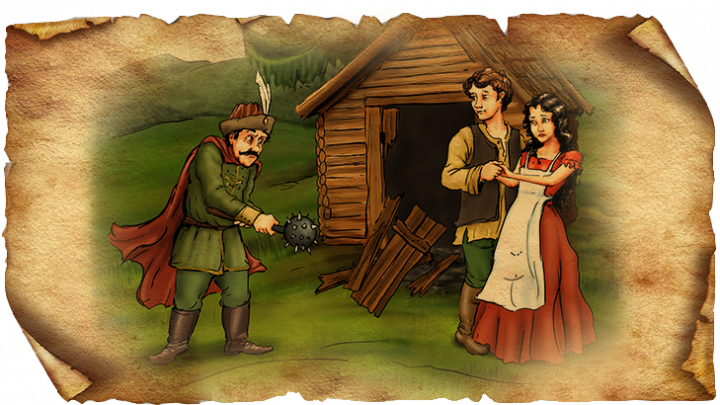
Záhkő Castle - Zau de Câmpie, Bod
According to the existing legends of the village, Záhkő Castle, which inhabited by a lord named Záh and his son, Bod, stood on the top of a mountain near Mezőzáh of today. Father and son often hunted together. On one of the hunts, Bod was left behind and, due to a fortunate coincidence, got to know the beautiful daughter of the forest shepherd. He fell in love with her immediately. However, his father did not accept at all that his son marries a girl with a lower rank, so the young couple escaped and hid in a forest house. Zah went after them, and with rage he killed the lovers with his sword. He soon regretted his actions and cursed himself - as a result of magic words, the castle crashed down and he himself died in the nearby lake. The most significant tourist attraction of the small settlement on the banks of the Mezőség stream is the Ugron Castle, which was built between 1909 and 1911 by the baron István Ugron, diplomat of the Austro-Hungarian Monarchy, the President of the Hungarian National Party, and the chief custodian of the Transylvanian Reformed Diocese. During the centuries, Mezőzáh and the surrounding forests and fields were in the possession of Transylvanian aristocrats such as the Ugron, Aczél, Bethlen, Banffy, Chonto and Wass families. The castle built according to a medieval French pattern is characterized by a kind of numerology: four towers (the number of seasons), twelve entrances (the number of months), four terraces (one month consists of four weeks) and fifty-two rooms (one year to many weeks). After that, it is not surprising that the building has exactly 365 windows - so the builder could look out of a different window every day of the year. There is also a story related to the building of the castle: Baron Ugron wanted to welcome worthily his love, the Princess of Russia, so he requested permission from the Emperor Franz Joseph to decorate his way out from the castle to the train station with gold. However, the emperor only agreed with the condition that the coins should be set on the edge so that no one can step on his face. This is how Ugron's plan ended in smoke - the fact that he didn't have a family, no offspring of his was born and lived retiredly until his death in 1948. The castle was then nationalized. The imposing building was also a sanatorium and an orphanage for decades - it is currently open to tourists. The complete renovation of the building, which lived once better times, has not yet begun. Hopefully, the Ugron Castle will not have the fate of Záhkő Castle, and in a few years’ time visitors can admire its onetime splendor.
Learn more